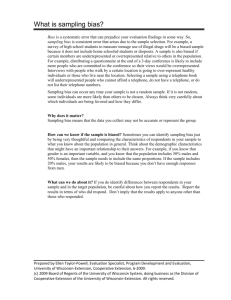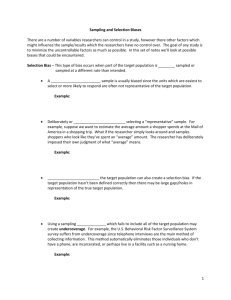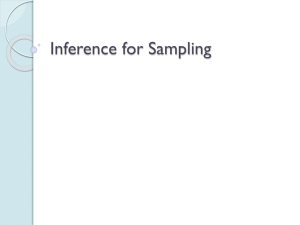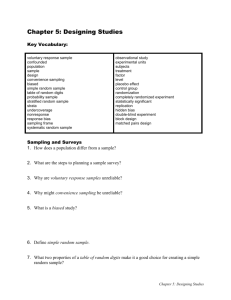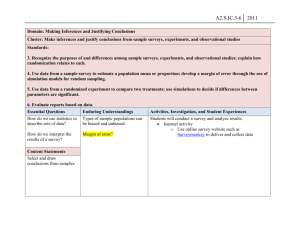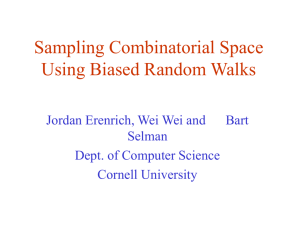Sampling.Concepts.Review
advertisement
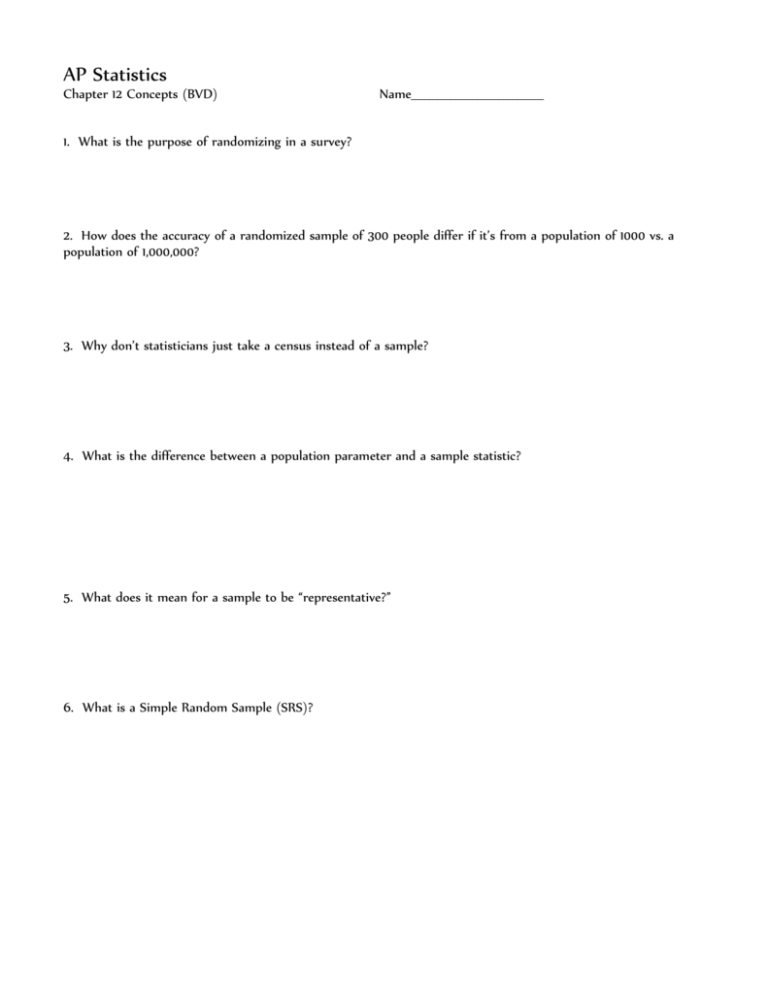
AP Statistics Chapter 12 Concepts (BVD) Name______________________________ 1. What is the purpose of randomizing in a survey? 2. How does the accuracy of a randomized sample of 300 people differ if it’s from a population of 1000 vs. a population of 1,000,000? 3. Why don’t statisticians just take a census instead of a sample? 4. What is the difference between a population parameter and a sample statistic? 5. What does it mean for a sample to be “representative?” 6. What is a Simple Random Sample (SRS)? 7. What is the sampling frame? Define and give an example. 8. What is sampling variability, and how can it be eliminated? 9. Describe stratified random sampling. 10. Describe cluster sampling. 11. Describe multistage sampling. 12. Describe systematic sampling. 13. When describing a sampling method, you should provide enough detail so that _____________________________________________________________________________. 14. “The sampling frame limits what your _______________ can find out.” 15. “One of the main benefits of simple random sampling is that it never loses its sense of ________ _________.” 16. “Bad sample designs yield ___________________ data.” 17. Describe a voluntary response sample and give an example. 18. Describe voluntary response bias. 19. “70% of parent say kids not worth it” vs. “90% of parents are glad they had children” What probably caused the different outcomes in these two surveys? 20. Give an example of convenience sampling. 21. What is the difference between undercoverage and nonresponse bias? 22. What is the difference between response bias and nonresponse bias? 23. List some ways you can recover from a biased sample or a survey that asks biased questions. 24. What does a bigger sample size for a biased study give you? 25. “If you possibly can, _________________ your survey.”





